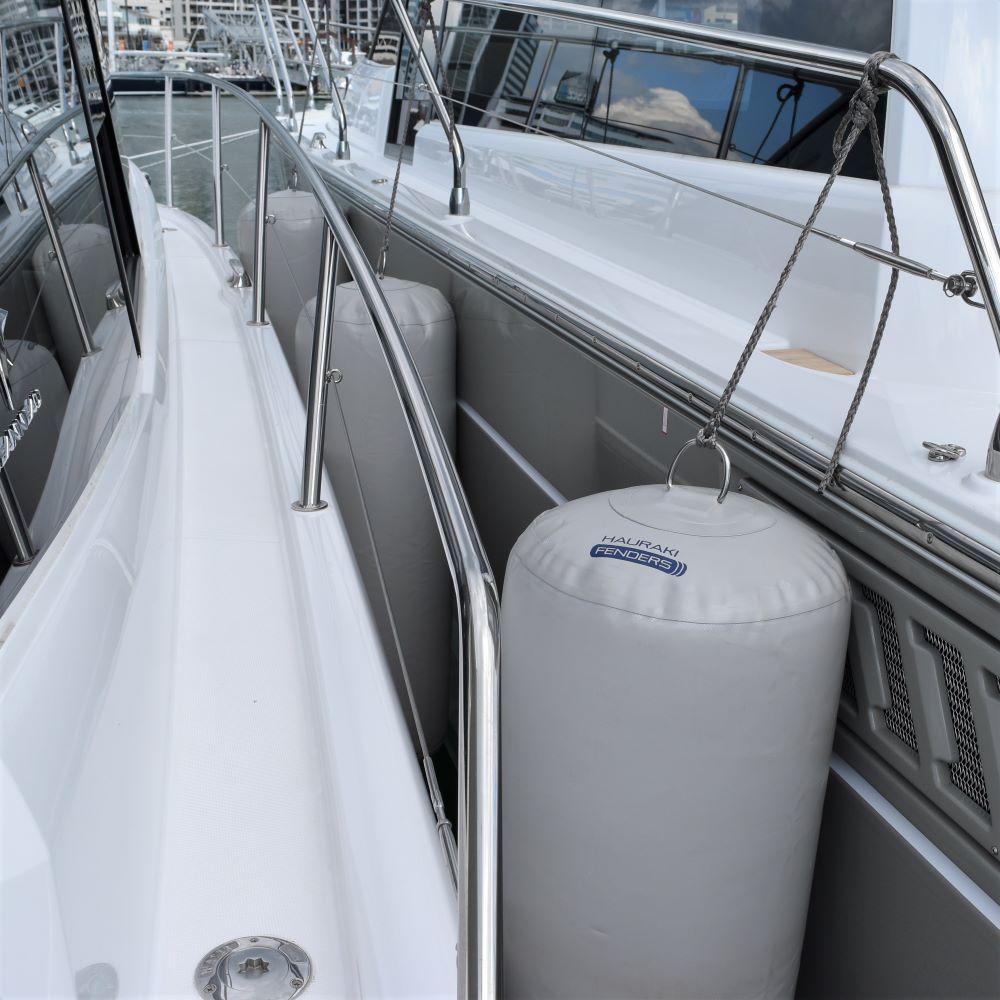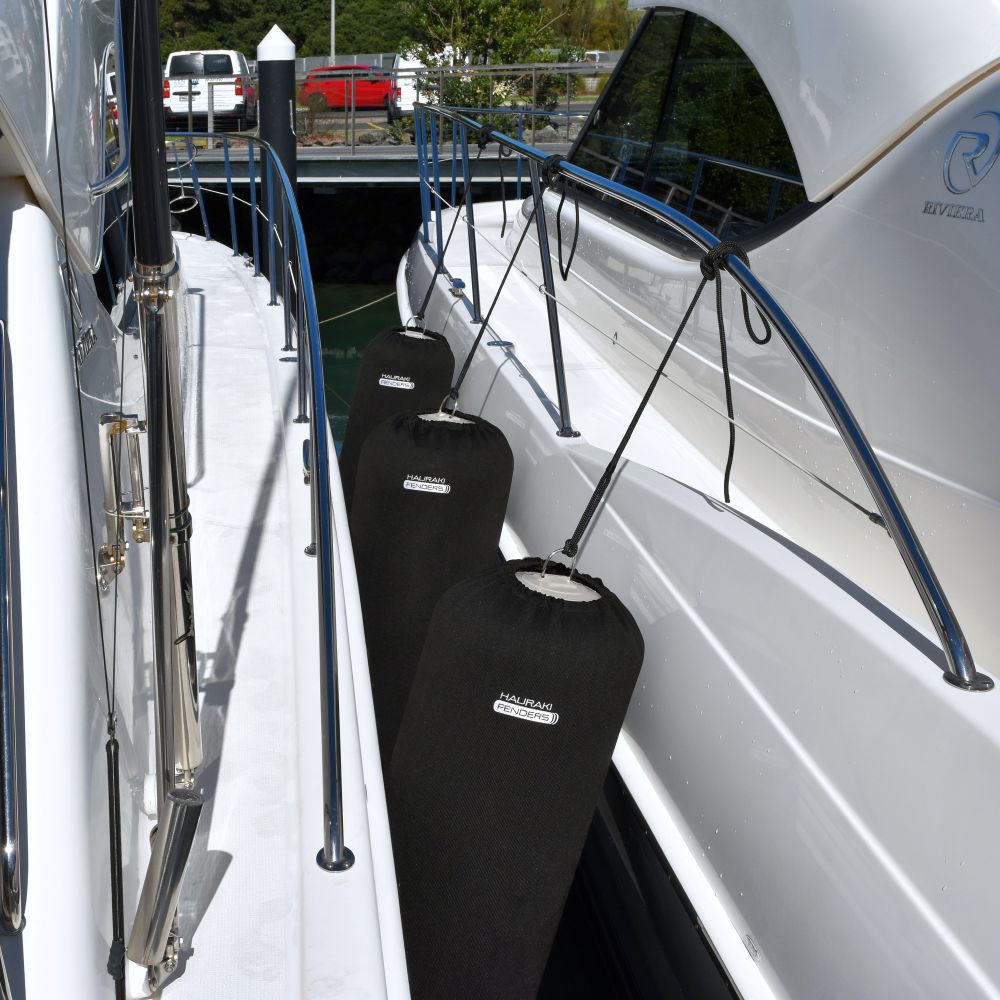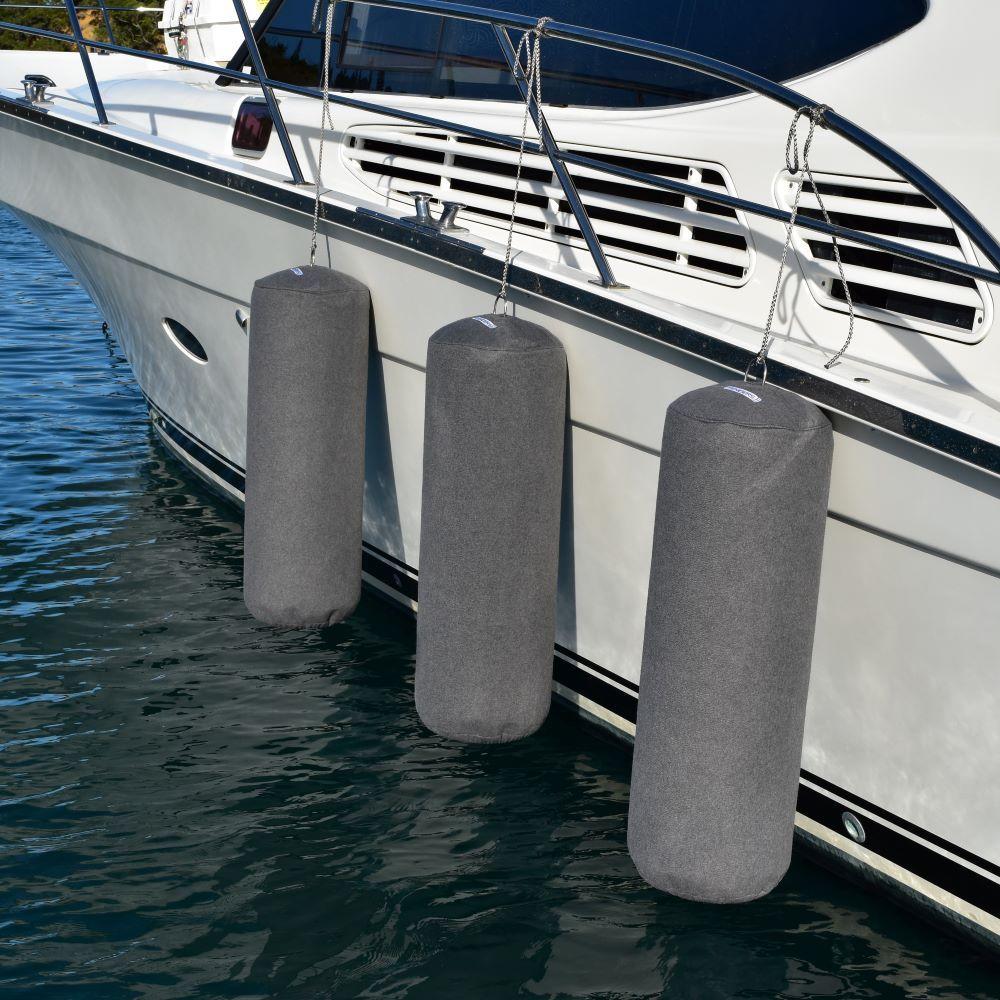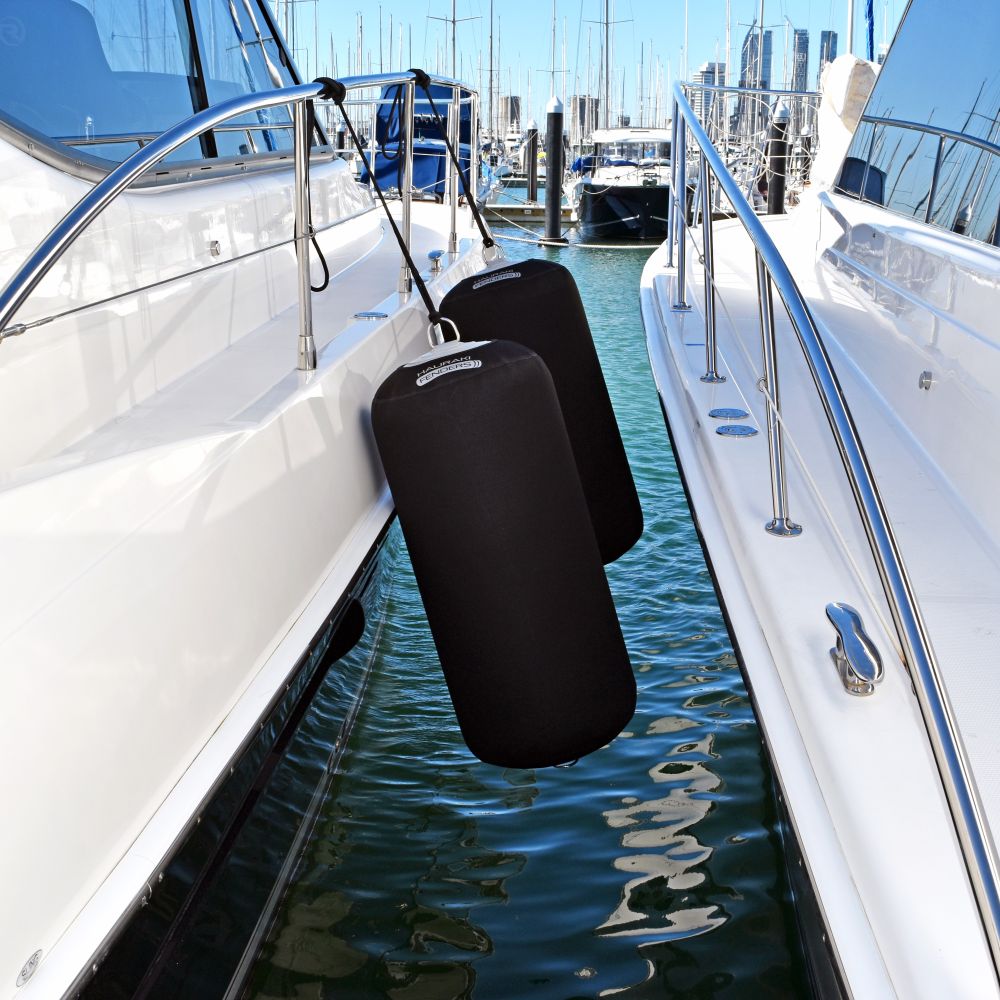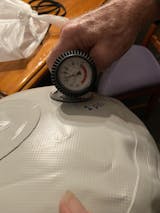Hauraki Fenders is a New Zealand-based marine company owned and Operated by Jacqui and Damon. They specialize in high-quality, boat fenders and yacht protection systems. They design, manufacture, and supply premium fenders that safeguard vessels from impact damage when docking, rafting up, or mooring. Their products are trusted by both private boat owners and commercial operators across New Zealand, Australia, and around the world.
I needed a bigger fender to better support the mid section of our boat. The fender is mounted horizontally on the side of the jetty.
The larger size is perfect !
We are yet to use them as we are saving them for our time cruising the Pacific Islands. However, they were very fast to pump up and we are very happy with the size. We saw them in use when we rafted to friends who had the same fenders and our boat was so well protected that we never needed our own fenders at that time. We are particularly pleased that they pack down so small which will be great for cruising and our passage to Tonga. Awesome!

